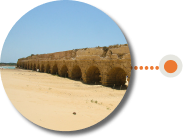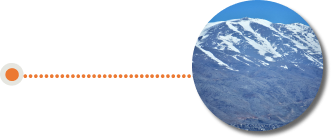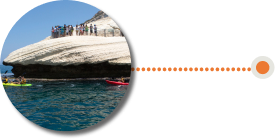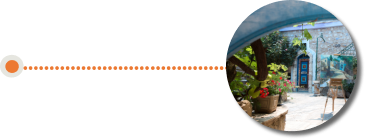From ideas to itinerary
we make meaningful Israel experiences
Youth programs, visits for professionals, family vacations, bar and bat mitzvahs: Every trip has a particular purpose, and every planner his or her own vision. We get it. That’s why we begin by really understanding your goals. Then, we build a personalized itinerary, handle all related logistics, and oversee its implementation—in person, and in the field – so that you can immerse yourself in your personal, enjoyable and hassle-free Israel experience.
YOUR OWN
PERSONAL ISRAEL
Everyone has their own idea of the perfect Israel experience. We match our boundless excitement for Israel and vast experience in the Israel travel industry to your specific needs and interests.
PERFECT
EXECUTION
We focus (obsessively) on the details, so that you or your groups can enjoy the big picture: your stay in Israel. We’re uncompromising in our determination to turn even the most complex itinerary into a smooth experience for you.
WE ARE YOUR PARTNER
We’re not just a vendor, and we’ll never make you leave a message. We mean it when we say we’re with you every step of the way, and prioritize providing fast, satisfying solutions to any problems that arise. No voicemail messages. Guaranteed.
THE RIGHT COMBINATION
Israel can be a spiritual experience, or an intellectual one. The Land of Genesis or the Start-Up Nation. Whatever your focus is, we make sure you sample the best of what Israel has to offer.
Our Tour Packages
Hermon Stream (Banias)
The largest waterfall in Israel is in the Nahal Hermon Nature Reserve (Banyas). Above the year-round flow of water there is a “hanging trail”, where unique remains of human legacy can be found.
Stalactite Cave Nature Reserve
Avshalom Cave, also known as Soreq Cave or Stalactites Cave, is a 5,000 sqm cave on the western side of Mt. Ye’ela, in the Judean hills, unique for its dense concentration of stalactites and other cave formations.
Gan HaShlosha National Park
Gan HaShlosha National Park, also known by its Arabic name Sakhne, is located between the kibbutzim of Beit Alfa and Nir David. It boasts beautiful pools of naturally warm water where visitors can swim all year.
Avdat National Park
In the heart of the desert, on a hilltop above the Tsin Stream watercourse, are the impressive remains of an ancient Nabatean city of Avdat.
Mount Arbel
Located in Israel’s Lower Galilee region, Mount Arbel stands sharply and prominently over the Sea of Galilee. Its graceful stature and steep slopes, particularly on the eastern side, provide magical views across the Kinneret and beyond, to the Golan Heights, and Israel’s tallest peak at Mount Hermon. Designated as Mount Arbel National Park and Nature Reserve, the mountain has beautiful observations, hiking trails, archaeology and Biblical history, and is the only place approved for base jumping in Israel.
Akko
The amazing old city of Akko offers the best of the old and new world: great restaurants perched on its seaside cliffs, age-old Templar castles, amazing Turkish Hammams, and world-class hotels alongside the exotic Arab market.
Haifa
Haifa is Israel’s third largest city. It sits on the slopes of Mount Carmel facing the Mediterranean Sea. Some call it ‘Israel’s San Francisco’. Although traditionally a city of laborers at the port, there are a number of great things to do in Haifa. Be sure to cross them off your Haifa bucket list. These include the Bahai Gardens and German Colony. It also houses several top museums. The city is also famous for its mixed population of Jews and Arabs, peacefully coexisting and creating some amazing fusions of Arabic and Jewish cultures.
Tel Aviv
Tel Aviv is Israel’s cultural and commercial capital. Nicknamed “The City that Never Rests”, Tel Aviv has a savvy attitude and cultural sharpness, a center of energetic nightlife, delicious cuisine, culture, and liberalism.
Jerusalem
Jerusalem is considered by many to be one of the holiest places in the world, a site of major significance for the three largest monotheistic religions: Judaism, Islam, and Christianity. Also considered the holiest city in the world for Jews, there is so much to see and to experience in Jerusalem, one day is never enough.
Sde Boker
Sde Boker is a kibbutz in the Negev desert of southern Israel. Best known as the retirement home of Israel’s first Prime Minister, David Ben-Gurion, it sits near a cliff overlooking amazing desert scenery and numerous hiking and biking routes.
Hula Valley
The Hula Valley is an agricultural region in northern Israel with abundant fresh water, which used to be Lake Hula, prior to its draining. It is a major stopover for birds migrating along the Syrian-African Rift Valley between Africa, Europe, and Asia.
Mount Hermon
Mount Hermon is Israel’s only winter ski and snowboard resort, located in the far north of the Golan Heights. It is amazing to think that in a country as small as Israel you can drive two hours from the desert to a ski resort. While Mount Hermon is not a world-class ski resort, it has snow for much of the winter. It is incredibly popular with Israelis and tourists alike who take a day or two to enjoy the winter sport activities. In the spring, summer and autumn, the resort takes on a different role. There are huge amounts of other outdoor activities taking advantage of the amazing landscape, including hiking, biking and more.
Gush Etzion
The Regional Council of Gush Etzion is located southeast of Jerusalem. One of the most important characteristics of Gush Etzion is its diversity, expressed in the variety of settlements and the mixture of religious, secular, traditional, and Haredi communities, from every ethnic background and socio-economic level. Gush Etzion has developed quite a bit in the past decade and has doubled its population, with more than 24,000 residents today.
Ein Gedi
Translated literally as the “spring of the kid (young goat)”, Ein Gedi is an oasis and a nature reserve located west of the Dead Sea, near Masada and the Qumran Caves. Ein Gedi was listed in 2016 as one of the most popular nature sites in the country, attracting about one million visitors a year.
Ein Bokek
Sandwiched between the turquoise waters of the southern Dead Sea and a dramatic tan bluff, Ein Bokek’s strip of luxury hotels is the region’s main tourist zone. More hotels and a tourism complex are in the works. Ein Bokek has the area’s nicest free beaches and is the Dead Sea’s main center for treating ailments such as psoriasis, arthritis and respiratory conditions with naturally occurring minerals and compounds.
Eilat
Once a tiny outpost on Israel’s southernmost shore, Eilat is now a major attraction for locals and tourists alike. The city of Eilat is based around tourism, with fun activities for everyone on land and sea. Spend your time sunbathing, diving, hiking nature trails, or hopping the border for an adventure in Jordan or Egypt!
Caesarea
The ancient city of Caesarea Maritima was built by Herod the Great about 25–13 BCE as a major port. It served as an administrative center of the province of Judaea (later named Syria Palaestina) in the Roman Empire, and later as the capital of the Byzantine province of Palaestina Prima.
Beit Guvrin National Park
Beit Guvrin-Maresha National Park is located in central Israel, 13 kilometers from Kiryat Gat, encompassing the ruins of Maresha, one of the important towns of Judah during the time of the First Temple, and Beit Guvrin, an important town in the Roman era, when it was known as Eleutheropolis. Archaeological artifacts unearthed at the site include a large Jewish cemetery, a Roman-Byzantine amphitheater, a Byzantine church, public baths, mosaics, and burial caves.
Hermon Stream (Banias) Nature Reserve
The largest waterfall in Israel is in the Nahal Hermon Nature Reserve (Banyas). Above the year-round flow of water there is a “hanging trail”, where unique remains of human legacy can be found.
Timna Park
The site of some of the world’s earliest copper mines (c 5000 BCE), the Timna Valley offers an awe-inspiring desert landscape of cliffs and rock formations in contrasting shades of burnt red, pink and tan. Its scenery and archaeological sites can be explored on over 20 hiking trails – many of them circuits – that take between one and 12 hours. Once you’re inside the park, you can stay until sundown.
Tzfat
One of Judaism’s four Holy Cities, Tzfat is well known as the center of Kabbalah (Jewish mysticism) in Israel, where around each turn of the cobbled streets lies another mystical shop welcoming you in for a taste of 16th century spirituality.
Beer Sheva
Beer Sheva is the largest city in the Negev desert of southern Israel. With a rich history of over 3,700 years since the Biblical Abraham, modern Be’er‑Sheva was founded in 1948 and populated by immigrants from over 70 countries. In just the last 20 years, Be’er‑Sheva’s multicultural, diverse population has doubled, welcoming thousands of additional immigrants, and both young and veteran Israelis who see the city’s potential as the place to build their futures.
Mount Tabor
Mount Tabor in the Lower Galilee region of Northern Israel rises with its distinctive rounded shape from the flat and fertile Jezreel Valley. Mount Tabor is important as a Biblical site from both the Old and New Testaments, and today, as a place of leisure, with awesome hiking trails and as one of the most important paragliding locations in Israel.
Shiloh
Shiloh, the site of the Tabernacle and the first capital of the Israelite Kingdom, is one of the most importance heritage sites in Israel, with a history of 3,000 years. The layers of the different historical periods present the story of the region and its people.
Rosh HaNikra
Rosh HaNikra is a geologic formation on the border between Israel and Lebanon, located on the coast of the Mediterranean Sea, in the Western Galilee. It is a white chalk cliff face which opens into spectacular grottos, accessed by a cable-car.
Makhtesh Ramon
The Ramon Crater in Israel’s Negev Desert is the world’s largest erosion crater, or “makhtesh”. A landform unique to Israel’s Negev and Egypt’s Sinai deserts’, a makhtesh is a large erosion cirque, created 220 million years ago when oceans covered the area (the word crater is therefore a misleading translation of Hebrew to English). The Ramon Crater measures 40km in length and between 2 and 10km in width, shaped like a long heart, and forms Israel’s largest national park, the Ramon Nature Reserve.
Mount Meron
The second highest mountain in israel, with impressive views all around, is also the location of the tomb of Rabbi Shimon bar Yochai. Leading up to the anniversary of his death on Lag BaOmer, thousands of people camp out along the slopes near the tomb, and on Lag B’Omer itself, hundreds of thousands make pilgrimages to celebrate the occasion.
Masada
Masada is not only important because it is a UNESCO World Heritage Site or an ancient fortress occupying a breathtaking, strategic location high on a flat plateau above the Dead Sea, but because of its symbolic importance of determination and heroism which continues to this day with many Israeli soldiers sworn in here. This mountain is one of the greatest archaeological sites in Israel and, perhaps, across the world. Its dramatic ascent can now be accessed by cable-car, but the drama and imagery that this site portrays is no less powerful than it ever was.
Sea of Galilee
The Sea of Galilee (the Kinneret) is the lowest freshwater lake on Earth and a magnificent geographical marvel surrounded by rural agricultural settlements. It is famous for its prominence among New Testament writings since this is the place where Jesus lived. The Sea of Galilee is one of the earliest settled areas in the Land of Israel. It boasts archaeological ruins, religious sites, modern cities, and endless outdoor pursuits.
title
kjh hhdflhslfh sldh


































































